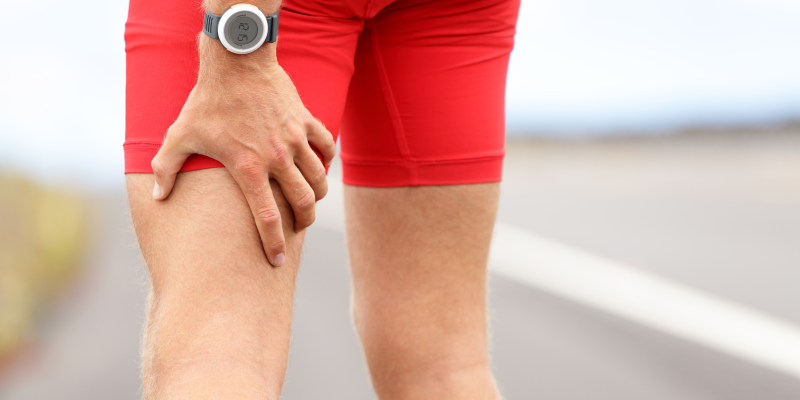Hamstring muscle injuries are common in several sports including AFL, soccer, and especially high-speed runners with excessive hamstring lengthening. Despite increased knowledge of hamstring muscle injuries, the incidence has not diminished. Moreover, nearly one-third of these injuries recur within the first year following a return to the sport, with subsequent injuries often being more severe than the original. We are going to show you a training protocol to prevent hamstring injury.
Risk Factors
Research highlighted some of the risk factors relating to the hamstring injury. (Read More)
1- previous hamstring injury
2- Inadequate flexibility of the group of muscles (Hamstring and Hip flexors),
3- Inadequate muscle strength (Read More)
4- Insufficient warm-up prior activity,
3 Degrees of hamstring muscle strain
1st Degrees: (mildest) little muscle tissue tearing, mild tenderness, pain with full range of movement.
2nd Degrees: Partial tear of muscle tissue or tendon, painful with a limited range of motion. Possibly some swelling and tenderness around the injured site.
3rd Degrees: Complete tear and ruptured muscle or tendon. Limited or no range of movement. Severe pain initially and pain could subside after a while.
How to reduce your chances of a hamstring injury?
Initially, you may need to identify your risk factors for getting a hamstring injury and as we said previous hamstring injury is a risk factor. We have designed a prevention program with 3 steps to follow: 1-hamstring flexibility, 2- hamstring strength, and 3-warm-up program prior activity.
Hamstring & Hip flexors flexibility
As we discussed earlier several research highlighted hamstring, hip flexors, and quadriceps flexibility a risk factor for the hamstring injury. We have selected a couple of stretches to target those muscle group.
1- Hamstring Static stretch. Placed your leg on an elevated surface with the knee extended and the ankle in plantarflexion. Lean forward from the hip, with the spine in neutral until a stretch is felt in the hamstring area. Hold the stretch for 30 seconds for 3 sets.
2- Hamstring Dynamic Stretch. Actively swing the leg to be stretched forward into hip flexion until a stretch is felt in the posterior thigh whilst keeping their knee extended and the ankle in plantarflexion. Try to repeat it for 30 seconds for 3 sets.
3– Hip–Flexor KneelingStretch. Kneel on right knee, with toes down, and place the left foot flat on the floor in front of you, knee bent and aligned with ankle. Press hips forward until you feel the tension in the front of your right thigh.
4- Quadriceps stretch in Prone Lying (on your stomach). Lie on the table/bed/floor and place a rolled towel under your right knee (optional). Grab your right ankle behind you and pull your ankle up behind. If you are unable to reach your ankle you may use a belt or towel looped around your ankle.
Putting a small cushion or rolled up towel under your knee can assist you to maximum stretch.
Hamstring strength
Several studies highlighted the incorporation of eccentric hamstring exercises as part of the prevention program has been substantially reduced the incidence of hamstring strain injuries. A recent study determined through isokinetic testing that a strength imbalance between the eccentric hamstrings and concentric quadriceps ratio resulted in an increase in the risk of hamstring injury. (Read more) In addition, to measure your muscle strength you will need Isokinetic Dynometerwhich is not usually available in public gyms.
A ratio of 1:0.6 or 66% has been used for the hamstrings but this is only for its concentric strength, for example, if your quads can push 100kg your hamstrings should be able to pull 66kg.
However, an important ratio is the eccentric ratio and for most a ratio of 1:1 is used, for example for every 100kg your hamstring can pull as the knee bends, it must be able to resist 100kg as your knee gets straightened (eccentric contraction).
You may want to know what is the link between eccentric strengthening and hamstring injuries.
Many studies suggest that the actual hamstring injury often takes place during eccentric contraction of the muscles. (Read More) “More specifically, it has been suggested that it is the portion of eccentric hamstring contraction occurring during the descending limb of the muscle’s length-tension relationship that results in injuries” (Read More).
We have highlighted for you 3 eccentric hamstring exercises to add to your training routine.
1- Ball leg curls. Begin on the floor laying on your back with your feet on top of the ball. Position the ball so that when your legs are extended your ankles are on top of the ball. This will be your starting position. Raise your hips off of the ground, keeping your weight on the shoulder blades and your feet. Flex the knees, pulling the ball as close to you as you can, contracting the hamstrings. After a brief pause, return to the starting position.
2- Nordic hamstring curl. Anchor your ankles comfortably under an immovable object, or have somebody sit on your heels. Kneel tall with your arms by your sides and imagine a piece of string pulling you upwards from the crown of your head. Fix your eyes straight ahead. Lower yourself as far as you can under control, and then reverse the motion to return to the start.
P.S. If you never tried this exercise, you may need to start with assisted Nordic curls (Hold on RB) and slowly progress to unassisted version.
3- Romanian Deadlift single leg (RDL’s) Hold a kettlebell in one hand, hanging to the side. Stand on one leg, on the same side that you hold the kettlebell. Keeping that knee slightly bent, perform a stiff-legged deadlift by bending at the hip, extending your free leg behind you for balance. Continue lowering the kettlebell until you are parallel to the ground, and then return to the upright position. Repeat for the desired number of repetitions.
Warmup program
1- Leg Swings: Stand with your legs hip-width apart. Swing your right leg forward and back, increasing the range of motion as you go (especially backward to activate your glutes). Repeat on your left leg. Keep your knees slightly bent and relaxed. You can use a wall or table to rest your hands on for support if needed.
2- Lateral Leg Swings: These are similar to leg swings, except you are swinging your legs side to side instead of front to back.
3- Walking Lunges: Begin standing with your feet hip-width apart. Step forward with your right foot into a lunge, with your knee above your ankle and thigh parallel to the ground. Lift your left leg up and forward and then step into a lunge with your left leg. As you lunge, you should be traveling forward. You can let your arms rest by your sides or on your hips. One lunge equals one rep.
4- High Knees: Begin standing with your feet hip-width apart. Quickly raise your right leg up so that your thigh is parallel to the ground, then quickly switch and raise your left leg. Focus on quickly switching legs and landing softly on the ground.
Our Approach
Dublin Sports Injury Clinics a Physical Therapy Clinic based in Fitzwilliam Square, Dublin2. We have a thorough assessment to role out the mechanism of your injury. The primary objective of our rehabilitation program will be the restoration of function to the greatest possible degree in the shortest possible time. We believe Patient’s education is an essential part of the rehabilitation program. We will explore the main root of their injury in layman terms and also show them the reason behind their rehabilitation program.
Treatment will be classified into different phases according to the length of time since the injury occurred. We design a customized rehabilitation program for every individual to help them to recover as quick as possible. We coach our patients and show them correct techniques and we progress their program step by step to help them get back to do what they love even stronger.
FOLLOW US ON YOUTUBE AND GET ACCESS TO OUR WEEKLY FREE REHABILITATION EXERCISES.
Next step
Want to get in touch with our team of the therapist or you are looking for some advice? Simply fill in your details below & we get in touch with you shortly.
Disclaimer: This article is for information only and should not be used for the diagnosis or treatment of medical conditions. You can contact us if you would like to book an appointment or get some advice from our therapist.

